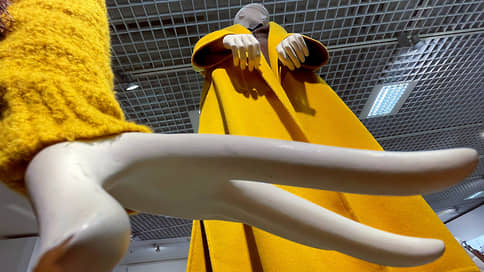Make a crisis out of these people
[ad_1]

Citizens of the Russian Federation are famous for their extraordinary behavior in crisis situations. Suffice it to recall domestic tourists, whom neither terrorist attacks nor earthquakes are able to dissuade from the beaches. So Russians spent 2023 completely different from what experts and businesses expected. The latter were preparing for almost the worst year in recent history, right up to the total primitivization of consumption. But exactly the opposite happened. The average citizen ate a lot, drank heavily, bought clothes and equipment, and traveled. Great news for those who sell all this. But there is also a bad thing – feverish consumption inevitably spins the flywheel of inflation.
After the consumer rush of the first months of hostilities in Russia and Ukraine, when citizens stocked up everything from salt to refrigerators, market participants were doomedly awaiting a pullback in 2023. And it happened. At the beginning of the year, demand fell: according to the Ministry of Economy, in the first quarter it was 3.9% lower year-on-year. Nobody was surprised. Due to the reduction in real incomes of the population in 2022 (according to Rosstat – by 1%), Russians, not particularly believing in the best, saved money for the next “rainy day”. The pressure of the mobilization that took place in the fall of 2022 with unclear prospects for its expansion towards the offensive looming ahead (either Russia or Ukraine, both terrible) also remained. Citizens cut back on serious spending.
These factors slowed down consumers for several months until they degenerated into their complete opposite. What caused the fall transformed into a driver of growth. There was no official second stage of mobilization. But the influx of massive payments to mobilized and contract soldiers, often forming the bulk of the budget of their families, an increase in the salaries of military personnel and security forces, and another indexation of salaries for military-industrial complex workers and some public sector employees fueled demand. Unsecured lending has also intensified.
Already in May, Rosstat noted an acceleration in the growth of retail trade turnover (by 9.3% year-on-year) and public catering (by a record 22.4%). At the end of the year, analysts believe that two key consumption segments will expand by 12–24%. The average occupancy of Russian hotels reached 65–70%, a level unprecedented during the crisis.
The trend has changed at an unprecedented speed, say experts from the key profile analytical company NielsenIQ.
According to their estimates, real disposable incomes grew by 4%, the consumer optimism index exceeded 100 for almost the entire year. Such a rise is only possible if citizens are ready to buy, they have money, and sellers have retained their usual and popular range of everyday goods.
“Consumers continue to look for ways to optimize their budget; there is no need to talk about the desire for complete savings,” according to NielsenIQ. The company’s survey found that 60% of consumers spent more on everyday items in 2023 than they did a year ago.
For example, Russians willingly bought clothes, although in any shock they save primarily on it. Thus, according to Infoline-Analytics forecasts, in 2023 retail sales of clothing and footwear will increase by 11.5%, to 2.9 trillion rubles. In 2022, they fell by 10.3%, to RUB 2.6 trillion. B1 (formerly E&Y in the Russian Federation) notes that fewer and fewer Russians are talking about the unavailability of familiar brands: the share of those who have to look for analogues has decreased over the year from 44% to 28%. There are already even the first victims of the struggle for Russians’ wallets: the Turkish clothing chains Ipekyol and Twist, which entered the market in 2022 in the hope of replacing Western brands, failed to attract buyers.
Nevertheless, experts cite the massive appearance of new brands on the market as one of the important reasons why the primitivization of the consumer market has not occurred. In 2023, out of more than 7 thousand new brands of everyday goods that appeared in the Russian Federation, the main part – 43.2% – fell on the premium segment, 37.3% – on the average and only 19.4% – on the economical one, NielsenIQ notes. Deputy Chairman of the Board of the Rusprodsoyuz Association Dmitry Leonov adds that over the past year the range of products has been updated by almost a quarter.
Senior analyst at Gazprombank Marat Ibragimov sees “the beginning of a new trend in the Russian market, when Russians, despite family budget restrictions, strive to get maximum variety and new consumer experiences.” Sellers and suppliers are filled with excitement at this prospect. So, if in 2022 50% of Russian retail and consumer goods manufacturers surveyed by NielsenIQ expected future business growth, then in 2023 – already 80%.
Participants in the consumer market are now afraid of something else: supply disruptions and rising costs. That is, fears have moved from the plane of demand to the plane of meeting it. Meanwhile, it is precisely the feverish growth of demand that can become a new significant risk for the entire economy. As NielsenIQ notes, if in September 2023 the contribution of inflation to the nominal growth of consumer goods was 2.7 percentage points (pp), then in October it was already 4.8 pp. The Central Bank has already warned that in the event If an imbalance arises in the market due to declining supply while demand is growing, the economy will find itself in an inflation trap and it will be difficult to get out of there without serious losses. But to scare the Russians, you need a bigger bazooka.
[ad_2]
Source link





